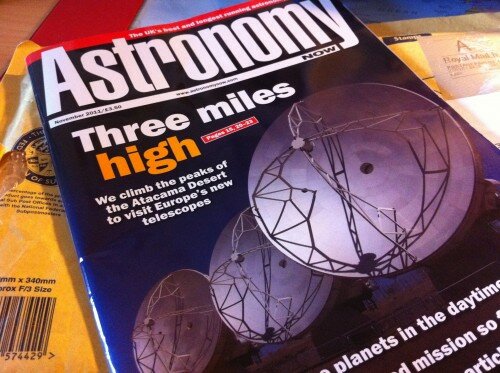Although it’s still a good few months until Astrofest, the pre-fun has definitely started. One of my crazy friends over there has promised to be in the front row wearing a Hanny’s Voorwerp t-shirt or something, so I’ll even have a groupie.
Another friend has sent me this month’s issue of the Astronomy Now magazine. Which, besides a lot of other interesting space news of course, has the announcement for Astrofest in it – yay! (See pictures below). Their current website now also reads the full programme, with the following synopsis and biography for my part:
“Hanny van Arkel is a biology teacher at the Citaverde College in Heerlen, the Netherlands. She became a ‘citizen scientist’ when she read about the online astronomy project called Galaxy Zoo on Brian May’s blog. While taking part in the project she discovered a peculiar-looking object that is now named Hanny’s Voorwerp in her honour. She has taken part in the further investigations of the object and is a co-author on the papers reporting the results. When not teaching, she is a keen musician and an ambassador for the Zooniverse, as the expanded citizen science project is now called.”
“In 2007, a group of professional astronomers asked the public to help them classify galaxies in an online citizen-science project called Galaxy Zoo. The volunteers were asked to view a large number of pictures from the Sloan Digital Sky Survey and to click the button best representing the shape of the galaxy on their screen, a task no computer could do accurately. After a couple of months the volunteer amateurs had not only classified a vast number of galaxies but had also made some discoveries of their own. Most famous of them was a glowing cloud of gas near the spiral galaxy IC 2497. This cloud is now known as Hanny’s Voorwerp, ‘voorwerp’ being Dutch for ‘object’. In this talk, its discoverer will tell us how she found this mysterious thing and describe new research which is helping to explain what it is.”
See you there then!










